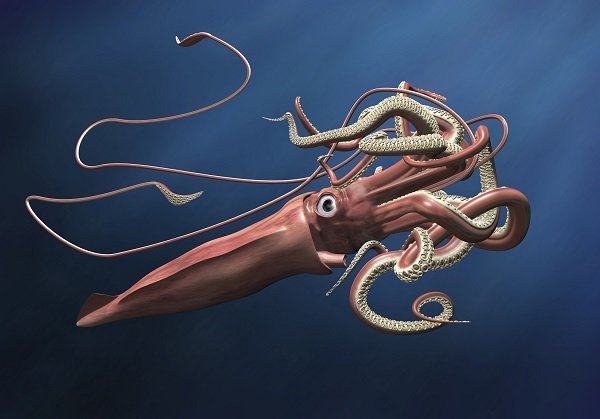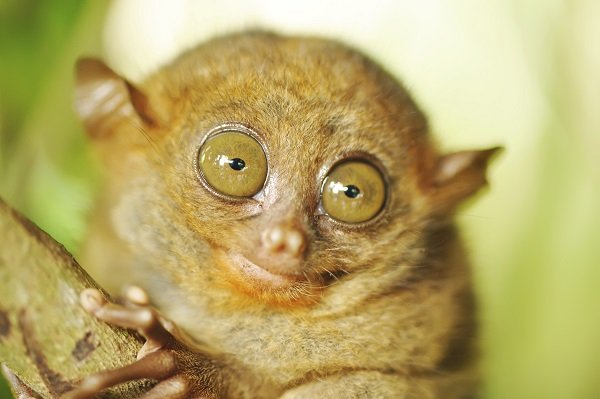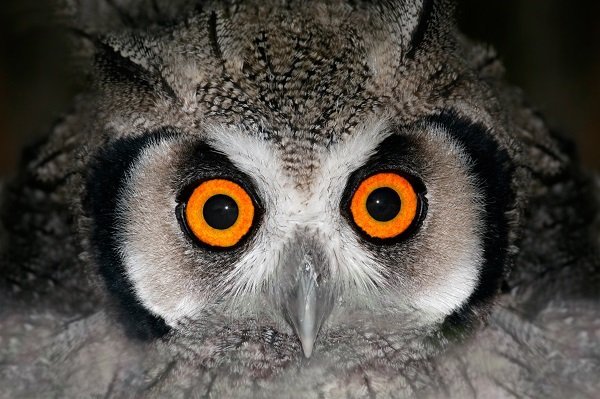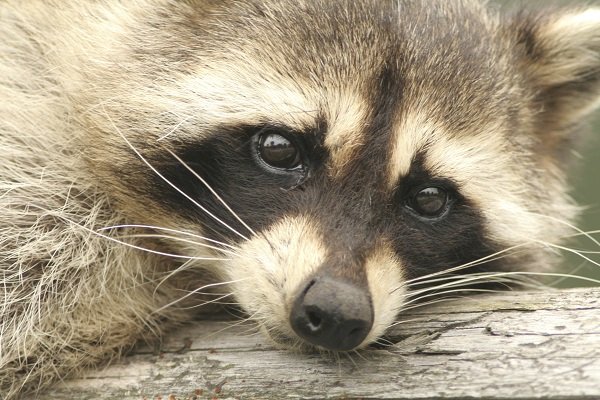During the winter months, things get dark outside pretty early, which really cuts into key hours that could be spent playing outside. If only you could see better in the dark! Lots of animals have amazing night vision thanks to some pretty cool adaptations. Here’s a countdown of adaptations that help animals see in the dark.
10. Eye Size
The colossal squid has the largest eyes of any known animal, reaching up to 30 cm across. That’s larger than a dinner plate! This species of squid lives in water up to 2 km deep. It’s pretty dark at these depths so having large eyes is a really important adaptation to help them see. Even at these depths there is still some light, if there was no light at all the squid would not be able to see.

9. Honing In
Tarsiers are small primates that are active at night. They can rotate their head 180°, which helps them to focus in the dark on objects at different distances. Tarsiers also have large eyes, just like the squid, this help them to see. In fact, the tarsier holds the record for the largest eyes in relation to their body size of any mammal!

8. Lens Size
Owls have a large lens that is very close to the back part of the eye called the retina. This large lens allows more light to reach the retina compared with other animals, helping them to see better at night. The eyes of owls take up about half the volume of their skull; that’s a lot of eye storage! Similar to tarsiers, owls can also rotate their head up to 270° allowing them to see their prey at different distances even in the dark.

7. More Rods Please
The eyes of vertebrate animals (including humans) have two main types of light sensitive cells in the retina (the back part of the eye): rods and cones. Rods help us see in different amounts of light, while cones help us see colours. Animals that can see well at night have more rod cells and less cone cells. The trade-off though is that they see less colour.

6. In the Centre of it all
Animals that can see well at night not only have more rod cells, but these rod cells are also specially designed to help focus light. The middle of the rod cell is very dense (or thick). This adaptation allows some mammals to make the most of the limited light that is available at night.

5. “Wired”
Humans have light sensitive cells (rods and cones) that help us know it is bright in the day and dark at night. For animals that can see well at night, their light sensitive cells are better able to tell the difference between light and dark. This increased sensitivity makes it easier for them to detect even the smallest movements in the dark.

4. In the Eyes of a Mirror
Spookfish are deep sea fish that live 1-2 km below the water’s surface. These fish have some of the most peculiar eyes! The spookfish’s eyes are divided into two halves by tissue inside the eyeball. This tissue is lined with special crystals that work like a mirror that not only reflects light inside the eye but also focuses the light. This adaptation helps them see in the dark, and as an added bonus, it also allows them to look up and down at the same time!

3. Straight to the Point
Leaf-tailed geckos can see up to 350 times better at night than we can. They have incredible night vision, thanks to vertical pupils made up of tiny holes about the size of the top of a pin that get wider in low light.

2. Upside down
Mammals that can see well at night have chromosomes (genetic material) arranged upside down inside the nucleus of their rod cells found in the eye. (Eskiw and Fraser 2009).

1. “Deer in the Headlights”
Animals like deer, raccoons and sheep have a special membrane on their eyes called the tapetum lucidum, which means “bright carpet”. The tapetum lucidum is a layer of cells that sits just behind the retina and acts like a mirror allowing more light into the eye. This special layer of cells allows them to see at night, and is also why these animals’ eyes glow bright yellowish green in the dark when light shines at them.


Go squids